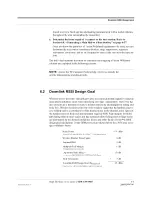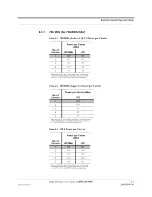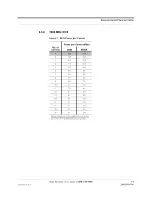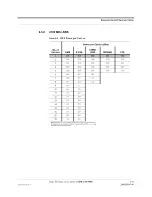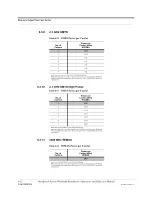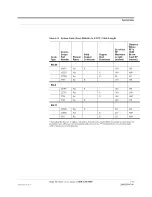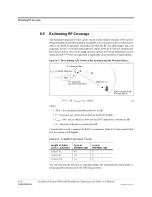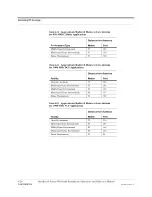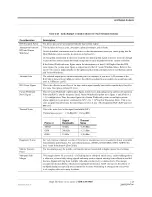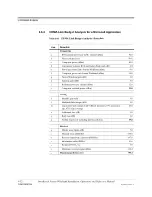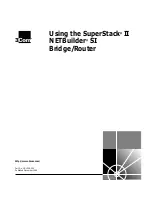
Help Hot Line (U.S. only): 1-800-530-9960
6-17
D-620616-0-20 Rev F
CONFIDENTIAL
Estimating RF Coverage
6.5.1
Path Loss Equation
In-building path loss obeys the distance power law
1
in equation (2):
PL = 20log
10
(4
d
0
f/c) + 10
n
log
10
(d/d
0
) +
s
(2)
where:
• PL is the path loss at a distance, d, from the antenna
• d = the distance expressed in meters
• d
0
= free-space path loss distance in meters
• f = the operating frequency in Hertz.
• c = the speed of light in a vacuum (3.0 × 10
8
m/sec).
•
n
= the path loss exponent and depends on the building “clutter” and frequency
of operation
•
s
= a normal random variable that depends on partition material and geome-
tries inside the building and is accounted for by the log-normal fade margin
used in the downlink RSSI design goal calculation
As a reference, Table 6-15 provides estimates of signal loss for some RF barriers
1
.
1. Rappaport, Theodore S.
Wireless Communications, Principles, and Practice
. Prentice Hall PTR, 1996.
Table 6-15
Average Signal Loss of Common Building Materials
Partition Type
Loss (dB)
Frequency (MHz)
Metal wall
26
815
Aluminum siding
20
815
Foil insulation
4
815
Cubicle walls
1.4
900
Concrete block wall
13
1300
Concrete floor
10
1300
Sheetrock
1 to 2
1300
Light machinery
3
1300
General machinery
7
1300
Heavy machinery
11
1300
Equipment racks
7
1300
Assembly line
6
1300
Ceiling duct
5
1300
Metal stairs
5
1300

